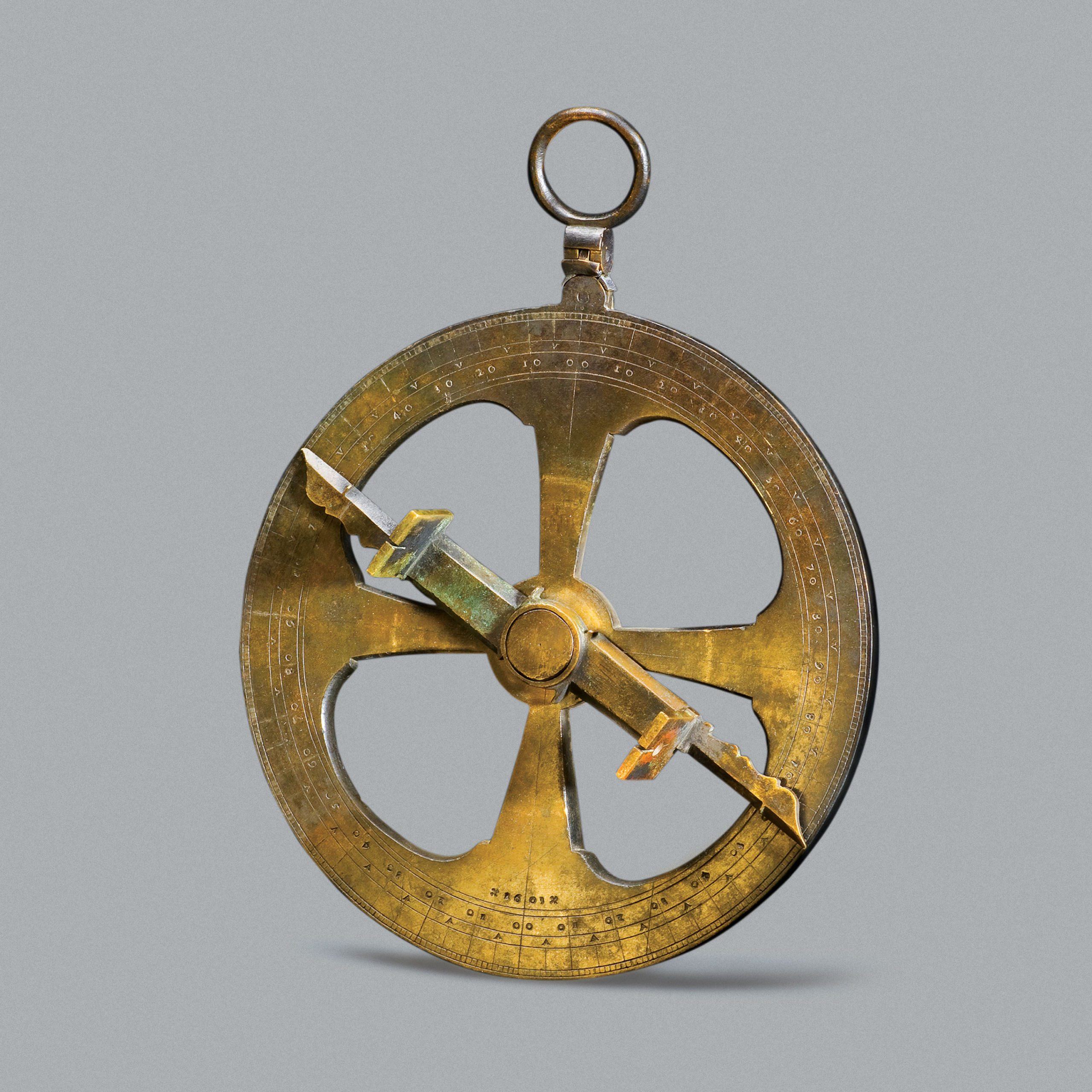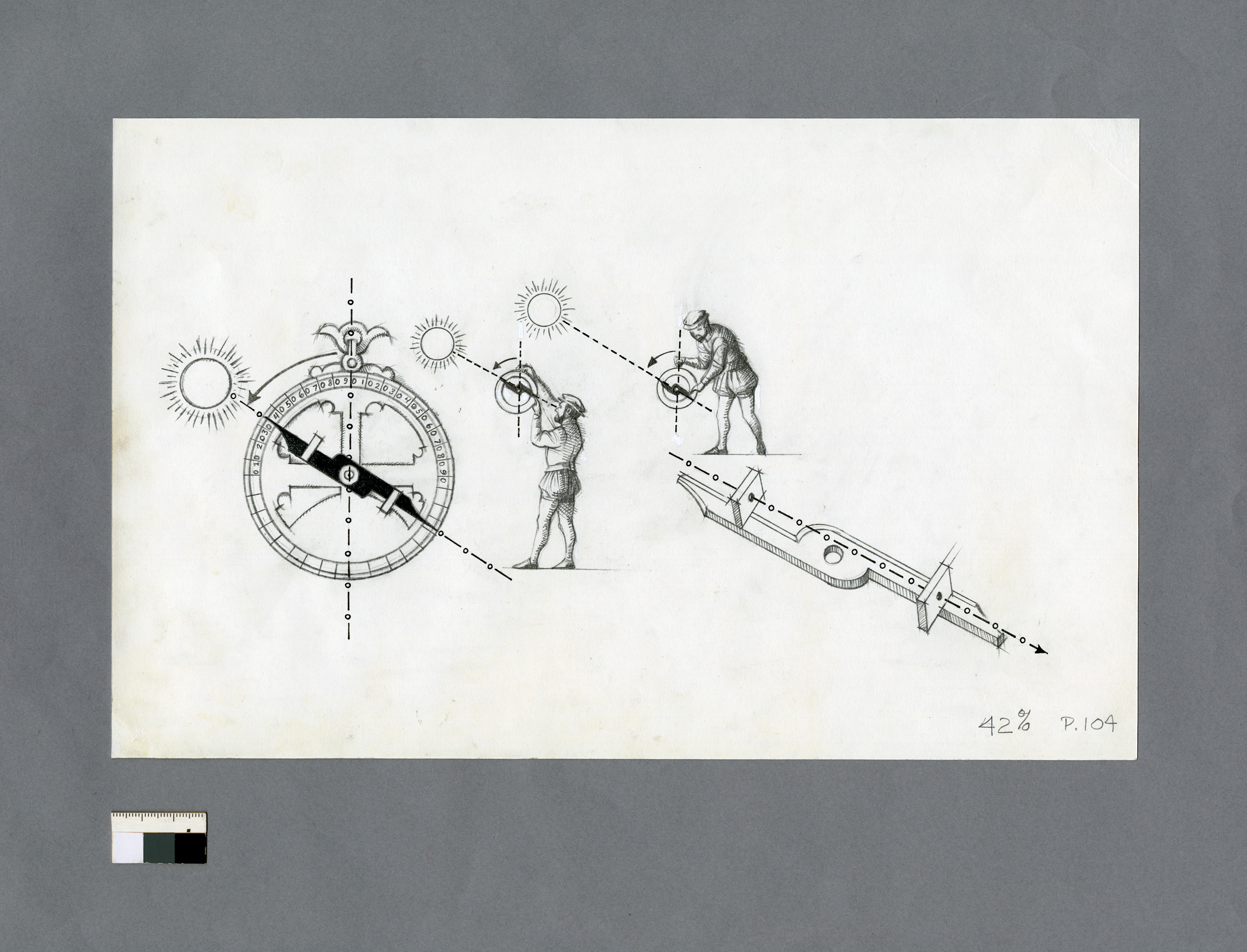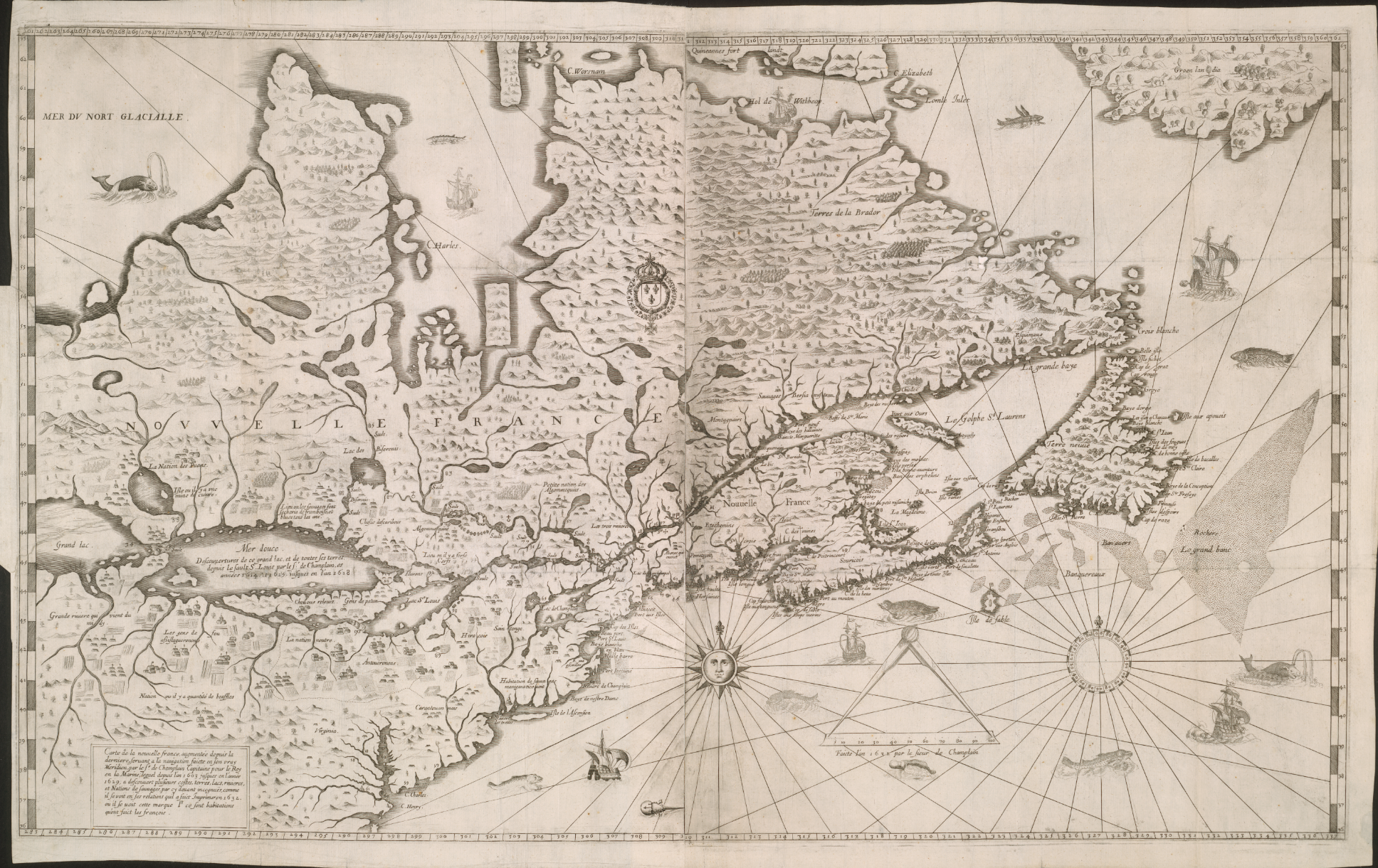Astrolabe
Artifact
Image
Video
Audio
 Activities
Activities
LOOK
Look closely at this object. What do you think its purpose is? Verify your answer by reading the Historical Context below.
THINK
Look at this object and read the Historical Context below. What questions do you have about this object, or the stories it represents? Share your questions with a partner.
Details
 Materials
Materials - Metal
- Bronze
Historical Context
Choose one of the three levels below to match your needs.
- An astrolabe is a device used to tell the time of day, time of year and location of the user, based on the horizon, sun and stars.
- A mariner’s astrolabe, like this one, measures the height of the sun or a star above the horizon.
- This astrolabe is a reproduction of one that was originally thought to belong to Samuel de Champlain, a French explorer and cartographer who travelled up the Ottawa River in May 1613.
Scroll through the media carousel above to see a diagram showing how to use an astrolabe and a map of the St. Lawrence area done by Samuel de Champlain.
An astrolabe is a device used to tell the time of day, time of year and location of the user, based on the horizon, sun and stars. Astrolabes have been around since ancient times. Invented by the ancient Greeks, they were refined and perfected in the Islamic world during the medieval period.
A mariner’s astrolabe, like this one, measures the height of the sun or a star above the horizon. Using an astrolabe, along with planetary tables and charts, a traveller could find their latitude.
This astrolabe is a reproduction of one that was originally thought to belong to Samuel de Champlain, a French explorer and cartographer who travelled up the Ottawa River in May 1613. However, its connection to Champlain has never been verified by historical evidence, and its provenance has been questioned and contested.
An astrolabe is a device used to tell the time of day, time of year, and location of the user, based on the horizon, sun and stars. Astrolabes have been around for centuries. Invented by the ancient Greeks, they were refined and perfected in the Islamic world during medieval times. Part of a suite of navigational tools, astrolabes were used for hundreds of years before being replaced by more accurate instruments in the late 17th century.
A mariner’s astrolabe, like this one, measures the height of the sun or another star above the horizon. Using an astrolabe, along with planetary tables and charts, a traveller could determine latitude.
This astrolabe is a reproduction of one that was originally thought to belong to Samuel de Champlain, a French explorer and cartographer who travelled up the Ottawa River in May 1613. According to some 19th-century authors, Champlain lost his astrolabe when his crew made a difficult portage to avoid rapids.
This famed astrolabe was supposedly the one recovered by a farm boy in 1867 near Green Lake (now called Astrolabe Lake) in Ontario. The astrolabe passed through many hands before it was acquired by the Canadian Museum of History in 1989. However, its connection to Champlain has never been confirmed by historical evidence, and its provenance has been questioned and contested.
The astrolabe is currently on display in the Canadian History Hall.
- An astrolabe is a device used to tell the time of day, time of year and location of the user, based on the horizon, sun and stars.
- A mariner’s astrolabe, like this one, measures the height of the sun or a star above the horizon.
- This astrolabe is a reproduction of one that was originally thought to belong to Samuel de Champlain, a French explorer and cartographer who travelled up the Ottawa River in May 1613.
Scroll through the media carousel above to see a diagram showing how to use an astrolabe and a map of the St. Lawrence area done by Samuel de Champlain.
An astrolabe is a device used to tell the time of day, time of year and location of the user, based on the horizon, sun and stars. Astrolabes have been around since ancient times. Invented by the ancient Greeks, they were refined and perfected in the Islamic world during the medieval period.
A mariner’s astrolabe, like this one, measures the height of the sun or a star above the horizon. Using an astrolabe, along with planetary tables and charts, a traveller could find their latitude.
This astrolabe is a reproduction of one that was originally thought to belong to Samuel de Champlain, a French explorer and cartographer who travelled up the Ottawa River in May 1613. However, its connection to Champlain has never been verified by historical evidence, and its provenance has been questioned and contested.
An astrolabe is a device used to tell the time of day, time of year, and location of the user, based on the horizon, sun and stars. Astrolabes have been around for centuries. Invented by the ancient Greeks, they were refined and perfected in the Islamic world during medieval times. Part of a suite of navigational tools, astrolabes were used for hundreds of years before being replaced by more accurate instruments in the late 17th century.
A mariner’s astrolabe, like this one, measures the height of the sun or another star above the horizon. Using an astrolabe, along with planetary tables and charts, a traveller could determine latitude.
This astrolabe is a reproduction of one that was originally thought to belong to Samuel de Champlain, a French explorer and cartographer who travelled up the Ottawa River in May 1613. According to some 19th-century authors, Champlain lost his astrolabe when his crew made a difficult portage to avoid rapids.
This famed astrolabe was supposedly the one recovered by a farm boy in 1867 near Green Lake (now called Astrolabe Lake) in Ontario. The astrolabe passed through many hands before it was acquired by the Canadian Museum of History in 1989. However, its connection to Champlain has never been confirmed by historical evidence, and its provenance has been questioned and contested.
The astrolabe is currently on display in the Canadian History Hall.
Summary
- An astrolabe is a device used to tell the time of day, time of year and location of the user, based on the horizon, sun and stars.
- A mariner’s astrolabe, like this one, measures the height of the sun or a star above the horizon.
- This astrolabe is a reproduction of one that was originally thought to belong to Samuel de Champlain, a French explorer and cartographer who travelled up the Ottawa River in May 1613.
Scroll through the media carousel above to see a diagram showing how to use an astrolabe and a map of the St. Lawrence area done by Samuel de Champlain.
Essential
An astrolabe is a device used to tell the time of day, time of year and location of the user, based on the horizon, sun and stars. Astrolabes have been around since ancient times. Invented by the ancient Greeks, they were refined and perfected in the Islamic world during the medieval period.
A mariner’s astrolabe, like this one, measures the height of the sun or a star above the horizon. Using an astrolabe, along with planetary tables and charts, a traveller could find their latitude.
This astrolabe is a reproduction of one that was originally thought to belong to Samuel de Champlain, a French explorer and cartographer who travelled up the Ottawa River in May 1613. However, its connection to Champlain has never been verified by historical evidence, and its provenance has been questioned and contested.
In-Depth
An astrolabe is a device used to tell the time of day, time of year, and location of the user, based on the horizon, sun and stars. Astrolabes have been around for centuries. Invented by the ancient Greeks, they were refined and perfected in the Islamic world during medieval times. Part of a suite of navigational tools, astrolabes were used for hundreds of years before being replaced by more accurate instruments in the late 17th century.
A mariner’s astrolabe, like this one, measures the height of the sun or another star above the horizon. Using an astrolabe, along with planetary tables and charts, a traveller could determine latitude.
This astrolabe is a reproduction of one that was originally thought to belong to Samuel de Champlain, a French explorer and cartographer who travelled up the Ottawa River in May 1613. According to some 19th-century authors, Champlain lost his astrolabe when his crew made a difficult portage to avoid rapids.
This famed astrolabe was supposedly the one recovered by a farm boy in 1867 near Green Lake (now called Astrolabe Lake) in Ontario. The astrolabe passed through many hands before it was acquired by the Canadian Museum of History in 1989. However, its connection to Champlain has never been confirmed by historical evidence, and its provenance has been questioned and contested.
The astrolabe is currently on display in the Canadian History Hall.



